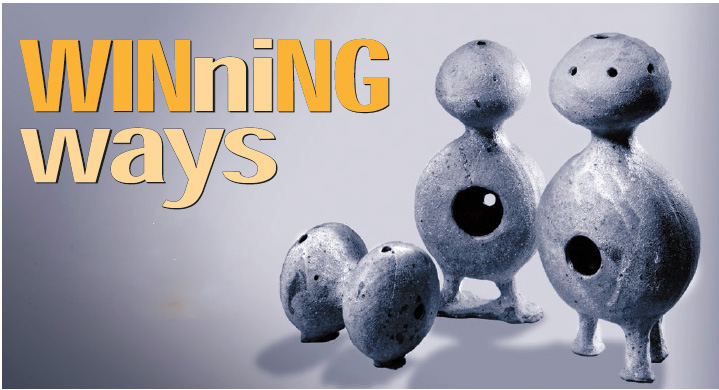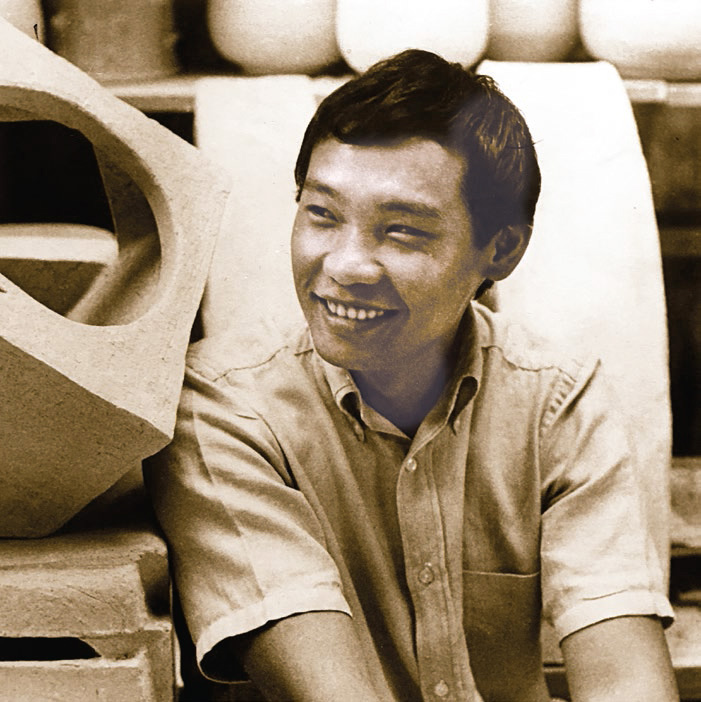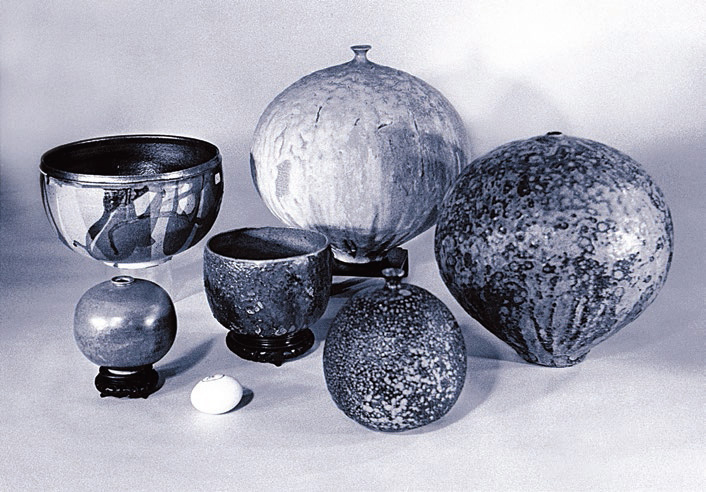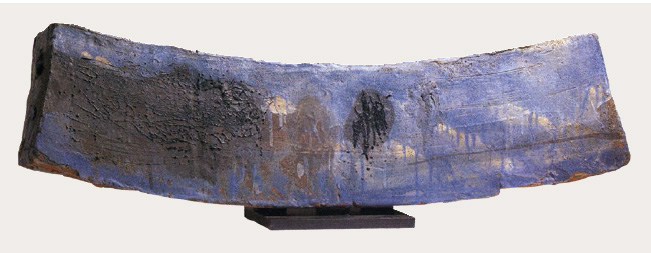Winning Ways
 |
|
|
The early 1960s was an exciting time for Win Ng. A recent art school graduate, he'd grown up poor in San Francisco's Chinatown, one of eight children—his dad a cook at a Chinese restaurant, his mom a seamstress who on occasion shelled shrimp at Fisherman's Wharf.
Now, it seemed, Ng was breaking out of Chinatown and into the art world in a big way.
"He was this young phenom entering the ceramics world, and people were paying attention to him," recalls Robert Brady, a Bay Area ceramicist and sculptor a decade younger than Ng. "He was recognized as a young emerging talent, and he got beyond emerging."
Already, while still studying at the California School of Fine Arts in San Francisco, Ng had a one-man show of ceramics at a prominent gallery in New York.
 |
At Ruth Braunstein's important Quay Gallery in San Francisco, Ng's abstract ceramics were being shown alongside those of Peter Voulkos, who would soon be legendary for bringing to ceramics the power of abstract expressionism.
"[Ng] began to cut into works, carve them, or experiment with textures, in an effort to draw to the surface what he felt were the inner rhythms of the piece," curator Allen Hicks later wrote about Ng's early work. "He was a leader among artists who were taking ceramics away from craft and into fine arts," Hicks says.
In 1959, Ng was one of two winners of a San Francisco Art Association purchase award, beating out such runners-up as Richard Diebenkorn and William Wiley. New York's prestigious Museum of Contemporary Crafts showed his work in the early 1960s. Other museums and galleries too showed Ng's ceramic sculpture, and he was profiled in arts magazines.
Ng was also thriving personally, enjoying a professional and romantic partnership with a young man he'd met through art school, Spaulding Taylor. The men worked at Ng's studio in the city's Bernal Heights, and then opened a larger studio in a garage on Folsom Street, South of Market.
 |
|
|
First they called their firm Environmental Ceramics, and then Taylor & Ng. (A mid-1960s ad instructed readers to pronounce Win's last name 'ing.')
Their goal, Taylor says, was to succeed as fine artists, supporting these efforts by producing and selling mugs, pots, and kitchenware in their studio factory. All went according to plan, with Ng continuing to produce sculpture and to show in galleries at Ghirardelli Square, museums, and art festivals. Taylor continued to paint while also turning out functional pottery.
Ng and Taylor were an integral part of the city's art scene, its burgeoning but largely closeted gay scene, and the growing Chinese art scene, where Ng was seen as a celebrity and role model.
The San Francisco Chronicle's society page in 1963 showed Ng sipping martinis with a socialite at a party thrown by artist Ruth Asawa. A year later, at a San Francisco Art Institute ball featuring "exotic dancer Leyla," one studio featured "pop art as conceived by artists Win Ng and Spaulding Taylor."
 |
|
|
Ah, la vie Boheme! But then came the chicken.
Hicks, who is married to Ng's sister, Katherine 'Mimi' Ng Hicks, wrote in a 2005 catalog for an Ng retrospective at the Chinese Historical Society of America that a chicken-shaped casserole was the firm's first big success.
Taylor says he crafted the original casserole, Ng refined the design and decorated it, and they produced it on their own. Then they had it cast at a small studio in St. Helena, and after that in a factory in Japan. The chicken was the first of many successes.




